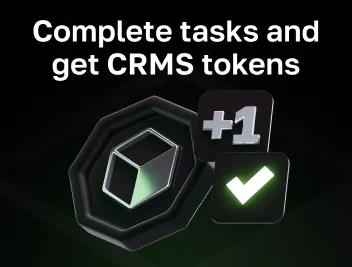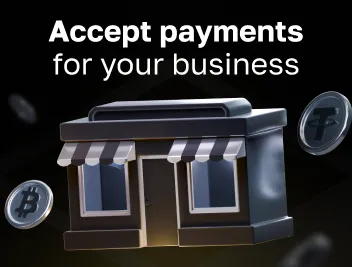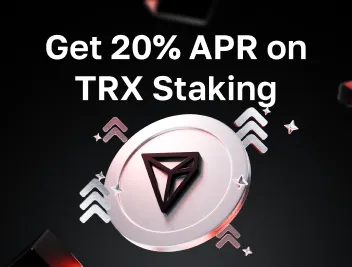
How to Track Transactions on The Blockchain
The blockchain technology is known for its transparency. Every crypto transaction is logged publicly, letting anyone see and verify its details. But how can you do that?
This guide will explore how to track crypto transactions. We’ll go over the basic terms and cover the existing methods that can be used.
Basic Elements Of Cryptocurrency Transactions
Before moving on to tracking, let's make sure you are acquainted with the basic elements of a crypto transaction:
- Hash: It’s a unique ID of the transaction, generated using a cryptographic algorithm. A hash ensures the transaction’s authenticity and immutability. Any change in the transaction detail, however minor, will result in a completely different hash.
- Sender Wallet: It’s a digital address from which the digital assets are transferred.
- Recipient Wallet: The address where the digital assets are credited to.
These elements, including transaction value and timestamp, are all incorporated into the blockchain. Blockchain is a public ledger that logs all verified transactions in a chronological and public manner. This makes it impossible to manipulate transactions or even reverse them.
Another factor you should know about is transaction fees. They can differ according to network activity and transaction urgency.
How To Track Bitcoin Transactions?
Bitcoin, the most famous digital currency, makes use of a dedicated blockchain. You can trace Bitcoin transactions, as all of them are public and permanently stored on the blockchain. This only applies to the movement of the tokens, not the individuals involved.
Let’s explore the primary methods of tracking Bitcoin transactions:
Blockchain Explorer
A blockchain explorer is an app that lets users view details regarding transactions on a specific blockchain. Various blockchains have diverse types of explorers. A Bitcoin one, for example, won't work for tracking transactions on the Ethereum blockchain.
Popular options for Bitcoin include Cryptomus, Blockchain.com, and Mempool. You can trace Bitcoin transactions by inputting a Bitcoin address or a transaction ID into blockchain explorers. Here is how the process works:
- Visit a Bitcoin Blockchain Explorer Website
- Enter Transaction ID, Sender, or Recipient Wallet Address
- View the Information Provided by the Explorer
Generally, every transaction entry displays details like the amount transferred, timestamp, transaction fees, confirmation status, and sender or receiver addresses. Such explorers will even work for cold wallets. Once you have the wallet address, you can easily look through its transaction history.

Wallet History
This method is incredibly simple. By utilizing a cryptocurrency wallet for Bitcoin transfers, you gain easy access to your transaction history directly within the wallet. This is a convenient way to trace your Bitcoin movements without an explorer. It’s also secure since you’re using only your own wallet.
Most wallets maintain a detailed record of all incoming and outgoing transactions within a dedicated "History" section. Clicking on any transaction reveals further details like the amount, date, and recipient or sender address.
However, this method does have its drawbacks. First off, it’s obviously limited to your own transactions. Plus, it doesn’t offer the same level of detail that blockchain explorer does.
Third-Party Services
Naturally, there are quite a few services that allow you to track Bitcoin transactions. Some well-known platforms are Blockchair and CoinMarketCap.
These services collect data from the Bitcoin blockchain and organize it for easy browsing and analysis. Nevertheless, you may need to pay a subscription fee to use such platforms.
Typically, those services allow users to filter transactions by date, type, or amount, and they can be accessed from desktops or smartphones. Depending on the network's level of anonymity, some platforms can offer limited wallet holder information or investment pattern insights.
Blockchain History
If you consider yourself an advanced user, you can download the blockchain history for complete control and offline access. This approach demands significant technical expertise, and it’s not recommended for beginners. But if you’re heavily invested in the crypt ecosystem, feel free to give it a try.
To make it work, you’ll need to run a full node. It downloads and stores a complete copy of the blockchain ledger. Once it's done, you’ll be able to search within the data offline. Needless to say, it also requires a significant amount of storage space. For example, a Bitcoin full node will need over 340 GB initially.
How To Track USDT Transactions?
Tether (USDT) is a stablecoin pegged to the US dollar. Unlike Bitcoin, which has its own blockchain, USDT can exist on several blockchains, most commonly:
- ERC-20 coins Utilize the Ethereum blockchain.
- TRC-20 coins: Utilize the Tron blockchain.
You can find information regarding their distinctions in this article.
It’s essential to clarify that USDT cannot be directly traced because it does not have a dedicated blockchain. But you can still track USDT ERC-20 or USDT TRC-20 based on the underlying blockchain.
For instance, you'd use a Tron blockchain explorer for USDT TRC-20 transactions and an Ethereum explorer for ERC-20 transactions. Almost every blockchain has its own explorer, making it easy to locate the appropriate one. The tracking process itself is identical to tracking Bitcoin transactions using blockchain explorers.
Now you know all the methods to trace transactions on the blockchain. Make sure to always keep your wallet address and private keys confidential when you use blockchain explorers or third-party services for maximal security.
Hopefully, this guide was helpful. Submit your thoughts and questions below!
Rate the article








comments
0
You must be logged in to post a comment